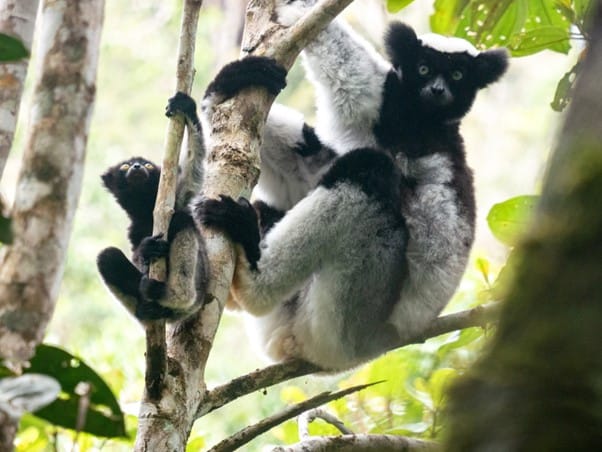Baby Lemurs Sing Out of Tune, Just Like Human Children, Finds University of Warwick Research

By Jill Dando News
A study led by primatologist Dr. Chiara De Gregorio from The University of Warwick has found that Madagascar’s singing lemurs, the indris (indri indri), sing out of tune in infancy and improve as adults, just like a human child learning to control their voice.
Have you ever noticed how young children struggle to sing in tune? The ability to match pitch and sing tunefully takes time to develop as children learn the range of their voice and develop fine-tuned pitch perception.
Turns out young lemurs do it too!
In this new study, published in Philosophical Transactions of the Royal Society B, a Warwick primatologist, alongside colleagues from the University of Turin, have analysed the vocal patterns of Madagascar’s singing lemurs at different ages and found they experience something very similar in development, hinting at a shared ancestry in vocal control and signing.
Why do indris sing out of tune?
Indris sing to defend their territory, communicate with family members, and reinforce social bonds.
They are unique among lemur species because they sing together in family groups, much like a primate choir. Their songs are made up of long, melodic notes, but not all of them are perfectly harmonic.
These irregularities, called nonlinear phenomena (NLP), include cracks, jumps in pitch, and rough, noisy sounds.
Dr. Chiara De Gregorio, Postdoctoral Research Fellow at The University of Warwick, and first author of this study said: “There are multiple theories to explain why some indris produce rough and irregular sounds, including as a form of emotional expression or as a unique tool for communication.
"In this analysis of 62 wild indris and over 16,000 notes, we found that young indris produce many more NLPs compared to their adult counterparts, suggesting that singing in tune is an ability that develops.”
As well as young indris producing more off-key notes than adults, there were also differences between the sexes.
Males sing with more roughness and instability than females, potentially due to differences in social roles. For example, a particular type of irregular sounds called subharmonics persists into adulthood, which potentially makes the singer sound bigger and more intimidating.
Researchers also saw more 'off-key' elements at the end of musical phrases, indicating that the animals get vocally tired—just as human singers might after a long performance.
WATCH VIDEO:
Image supplied Warwick University credit University of Torino.
A Shared Vocal Journey with Humans
Learning to sing in tune takes time, even for primates. The communicative role of their singing offers an evolutionary window into the origins of rhythmic and melodic communication in primates and humans.
Especially given the commonalities between the struggles that a human child might have when developing their speech and music skills, and those of a young indri when first singing.
Dr Daria Valente, University of Turin, and co-first author of this study said: “Our findings go beyond just explaining NLP in the vocalizations of a single species, they shed light on the deeper evolutionary origins of vocal nonlinearities across the animal kingdom.”
The full study can be accessed here: https://doi.org/10.1098/rstb.2024.0021
Subscribe today in just 30 seconds to support our mission.
👉 https://www.goodnewspost.co.uk/#/portal/
OUR VISION: A PEOPLE-FIRST WORLD NEWS
The world is drowning in bad news. Anxiety, fear, and negativity dominate headlines. Social media fuels 24/7 doomscrolling, and a mental health crisis is spiraling out of control.
ENOUGH IS ENOUGH. IT’S TIME TO FIGHT BACK.
That's why we created The Good News Post—a positive news ecosystem designed to put people first and inspire a world that is:
Deliberately social media-free. Join us where real connection happens





